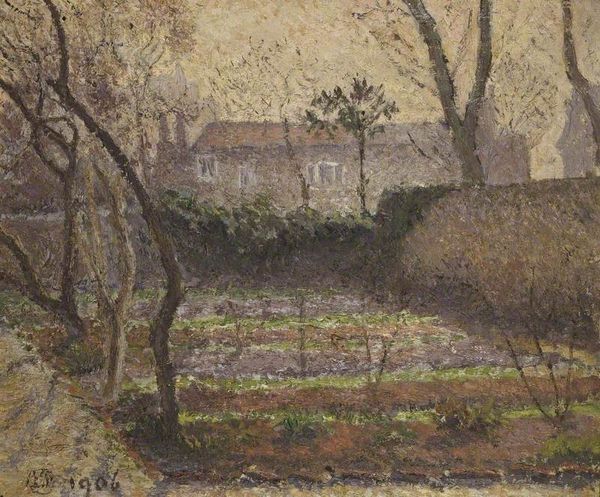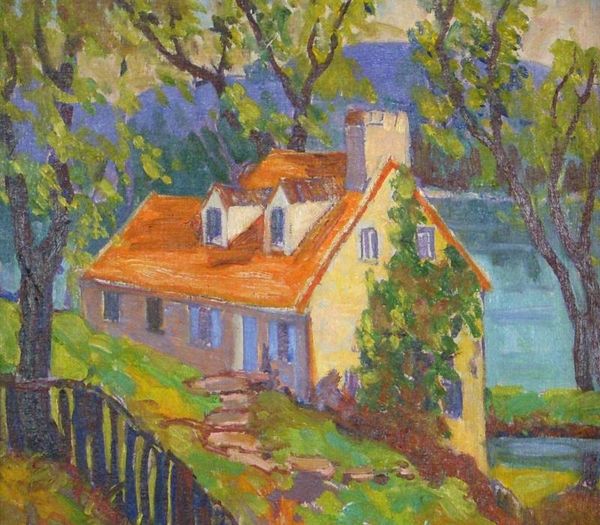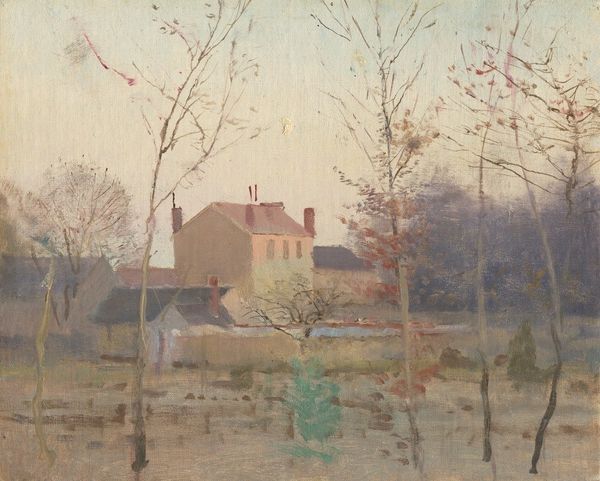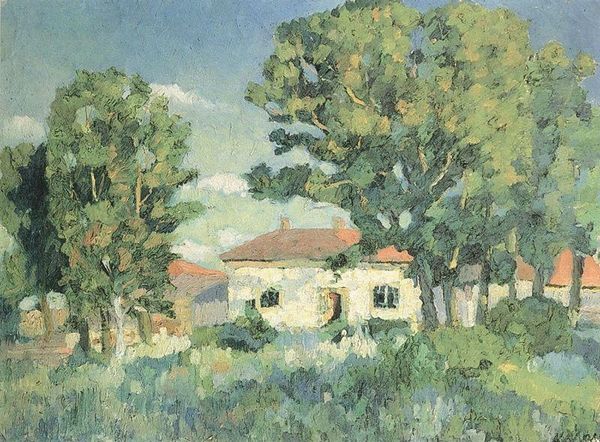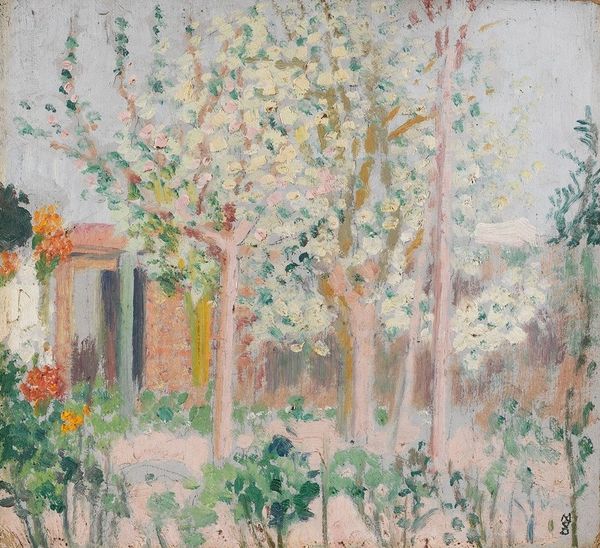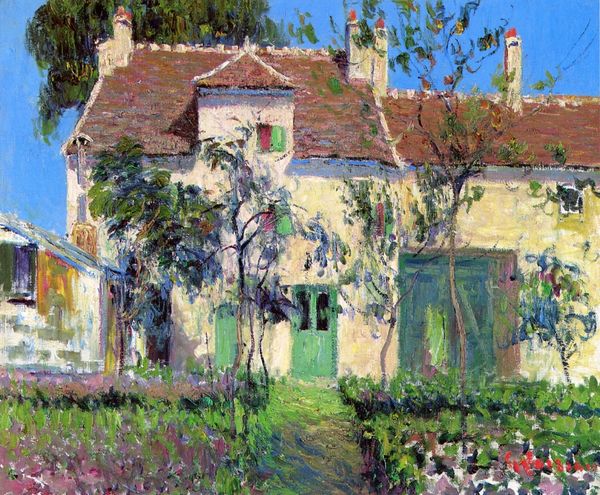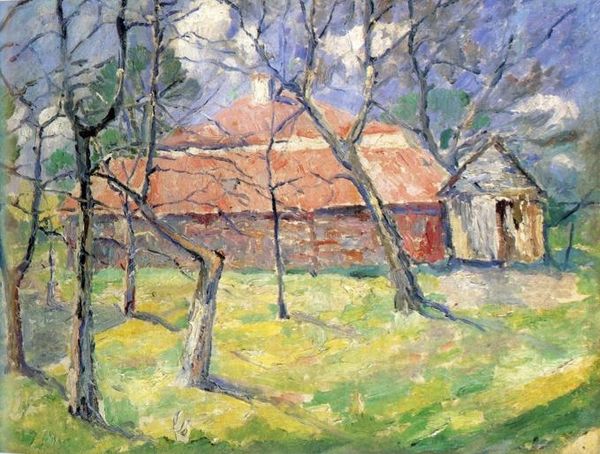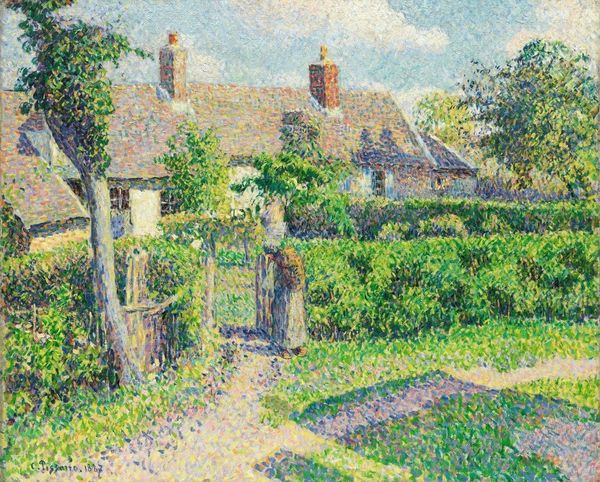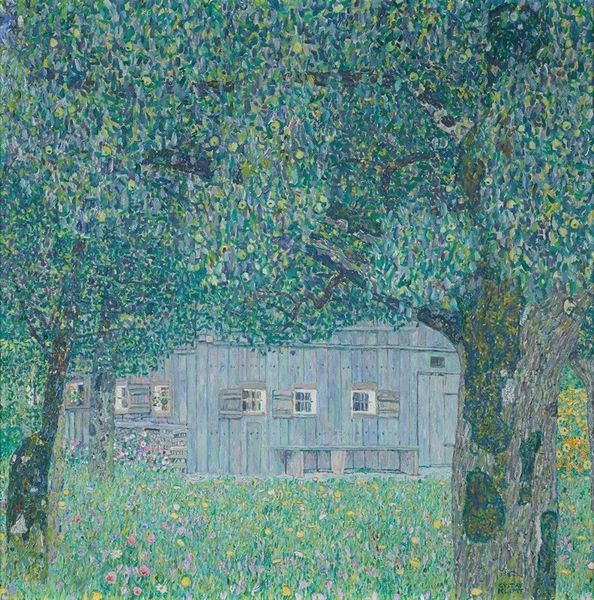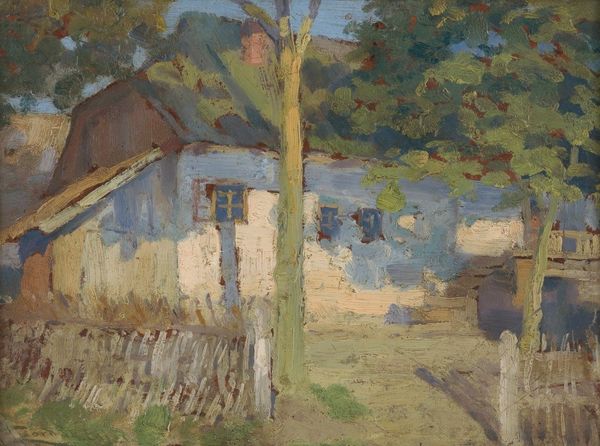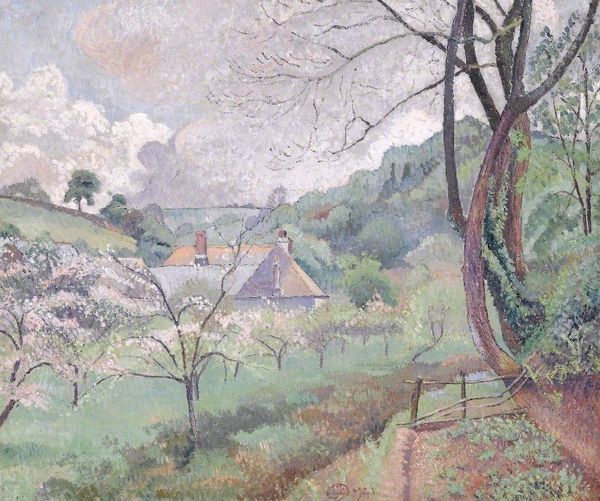
Copyright: Public Domain: Artvee
Editor: So, here we have Henri Martin's "Corner of a House," painted around the 1930s using oil paint. It’s really captivating, but also a bit… unresolved, isn’t it? What is your interpretation of this particular composition? Curator: I see it as Martin engaging with the ongoing debate about the role of art in everyday life. By focusing on a common architectural element – the corner of a house – and rendering it with Impressionistic brushstrokes, he elevates the ordinary. Editor: Right! I can appreciate his decision to do so, it’s so… accessible? Do you see it responding to particular socio-political anxieties of the time? Curator: Absolutely. Remember the 1930s – economic instability, growing social divisions. Painting familiar, domestic scenes served to reinforce traditional values and a sense of stability when these were actually fragile and uncertain, which allowed people to see life in color despite living in dark, murky times. Editor: That’s an interesting point. It makes you consider who this was meant to be seen by. The bright colours versus its themes creates a complex viewing. Was it shown in exhibits? What about museums? Curator: Martin exhibited widely. Works like this one helped cement the public's perception of art as not just something for the elite but as a source of comfort and national identity. And it demonstrates post-Impressionism's complicated engagement with a world in transition. Is it pure escapism, or does it reflect the yearnings of his target demographic? Editor: It's amazing to consider those underlying implications in such a seemingly simple scene. I’ll never look at post-Impressionism quite the same way! Curator: Indeed, this work reveals much about the complex relationship between art, public sentiment, and socio-political contexts, doesn't it? A corner is a start to something else entirely!
Comments
No comments
Be the first to comment and join the conversation on the ultimate creative platform.
